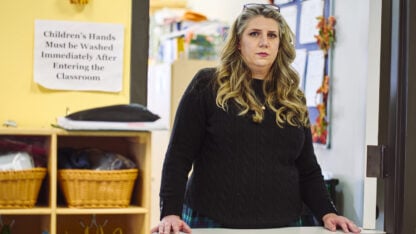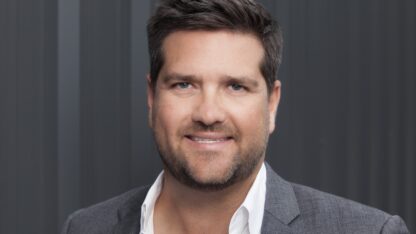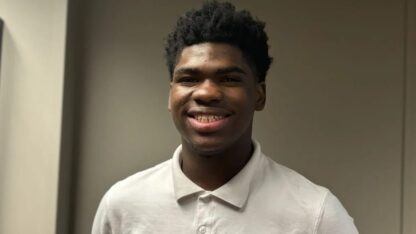CDC Director Says Vaccine Rollout Will Get Much Harder

Dr. Rochelle Walensky, director of the Centers for Disease Control and Prevention, talks with teenagers about to get their COVID-19 vaccines during a visit to the Whitfield County Health Department in Dalton, Georgia on May 20, 2021.
Sam Whitehead / WABE
Damaris Cruz sits in the lobby of the Whitfield County Health Department in Dalton, Georgia. She’s one of a handful of people waiting on a COVID-19 vaccine appointment.
The 25-year-old says she’s nervous to get her first shot: she’s worried about side effects. But Cruz says she feels like she owes it to those around her in this town where she grew up.
“I want to consider others,” Cruz says. “I might not get as sick as those in the older generations, but I do want to think about them and be respectful. If it’s something that I can do for the community, I want to be part of it.”
Seeing her father get the shot was a big motivator, Cruz says. If he was willing to overcome his hesitation and get vaccinated, she felt she could, too.
People aren’t breaking down the doors looking for shots like they were in the early days of the rollout, says Karen Penland, a nurse at the health department.
She remembers a time when older Georgians, newly eligible for vaccination, filled the lobby waiting for appointments. Now that most residents have qualified for shots for close to two months, demand has slowed.
“At first, when we started doing vaccines we were doing about a thousand a day,” Penland said. “And then it’s slowly dropped off to … about 100 a day.”
The number of shots put in arms each day in Georgia and nationwide peaked in early April and has been trending downward ever since, according to data from the Centers for Disease Control and Prevention.
That decrease in demand has led the Georgia Emergency Management Agency to shutter its mass vaccination sites, which are set to stop offering shots Friday.
But this shift in the vaccine rollout should be surprising, says Dr. Rochelle Walensky, who heads the CDC. She says the next phase of the process will be slower, but that’s not a sign that the effort is failing.
“Every vaccine in every arm is a win. 30 at a time, 10 at a time: those are wins. And we knew we’d be here,” Wallenksy said during a visit to the health department Thursday.
Each of those shots is going to take more on-the-ground work, Walensky says, especially because of barriers such as vaccine hesitancy, fueled by a lack of personal experience with COVID-19, the politicization of the pandemic, and misinformation about the coronavirus.
Those barriers loom large in places like Whitfield County, where just under a quarter of the population is fully vaccinated, according to state data. But, Walensky says, they can be overcome.
“Somebody said we need to get in their way,” she said, recalling a conversation with a community leader from earlier in the day. “We need to show up at their workplace and just say ‘Would you like a vaccine?’ We need to find those extra ways that people might be willing.”
There’s a lot riding on that work. Even as more and more Americans get vaccinated, some parts of the country are outpacing others. Wallenksy worries that could leave portions of the U.S. more vulnerable to disease spread in the future.
In Georgia, there’s a lot more work to do. About 38% of Americans are fully vaccinated, compared to just 31% of state residents.
“This virus is an opportunist—it will go where vaccination rates are low. We don’t want to see that,” Walensky said. “I really want to make sure … that [rates] get up to a place in every corner in every county to make sure that that doesn’t happen.”







